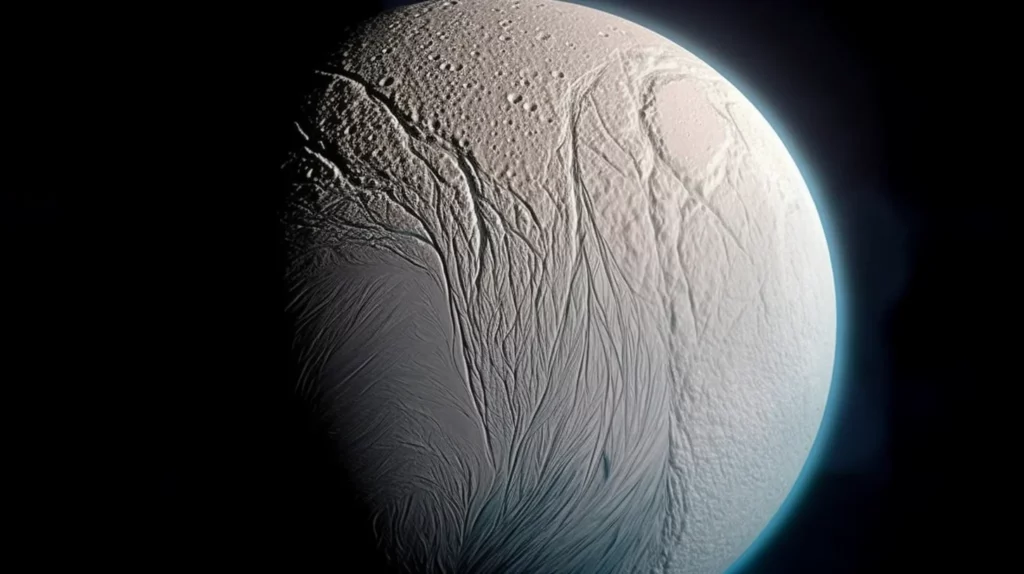Its Official: Saturn’s sixth-largest moon, Enceladus has all the right ingredients for life

Uncover the captivating potential of Enceladus, Saturn's sixth-largest moon, as it unveils all the right ingredients for life, offering a world filled with possibilities and mysteries waiting to be unraveled.
The sixth largest moon of Saturn, Enceladus, has all the right ingredients for life. This revelation, based on a new analysis of data from NASA's Cassini spacecraft mission, suggests that other similar moons in the outer solar system could also be habitable.
Enceladus: A potential abode for life
Enceladus has all the right ingredients for life, and the recent discovery of phosphorus is the final piece of the puzzle. All life on Earth relies on six essential elements: carbon, hydrogen, nitrogen, oxygen, sulfur, and phosphorus. Until now, phosphorus was the only one that researchers had never detected beyond Earth. Enceladus has all the suitable ingredients for life, significantly increasing the possibility of finding life in the solar system beyond Earth.
The discovery of phosphorus: The final ingredient
The samples confirming the presence of phosphorus came from one of Saturn's rings, which mainly contained water ice expelled by geysers-like volcanoes in the liquid ocean beneath the moon's icy surface. Previous examination of these samples detected little to no phosphorus. However, research using a new geochemical model suggests that phosphorus is abundant on Enceladus, with concentrations at least 100 times higher than in Earth's oceans.

Beyond the CO2 snow line: Other habitable worlds
The findings suggest that other worlds beyond the CO2 snow line, the point in the outer solar system beyond which sunlight no longer melts carbon dioxide and freezes it into ice, could be as habitable as Enceladus. These include Pluto and Neptune's moon, Triton. Despite being too far from the Sun to receive sufficient sunlight, these environments could harbor life. The essential heat could come from hydrothermal vents, which are abundant in the deepest oceans on Earth.
Saturn's sixth largest moon, Enceladus, has all the right ingredients for life, according to a new analysis of data from NASA's Cassini spacecraft mission. This discovery suggests that other similar moons in the outer solar system could also be habitable. The samples confirming the presence of phosphorus, the final piece of the puzzle, came from one of Saturn's rings.
These samples mainly contain water ice expelled by geysers-like volcanoes in the liquid ocean beneath the moon's icy surface. The findings suggest that other worlds beyond the CO2 snow line, including Pluto and Triton, Neptune's moon, could be as habitable as Enceladus. NASA recently detected a massive water eruption from Enceladus using the James Webb Space Telescope, which will likely uncover more information about this intriguing moon. The discovery of phosphorus on Enceladus, combined with the presence of the other five essential vital elements, brings us one step closer to finding life beyond Earth.
The future of exploration: Discovering more about Enceladus
NASA detected a massive water eruption from Enceladus using the James Webb Space Telescope at the end of last month. The plume extended over 6,000 miles, roughly 20 times the moon's diameter. Further observations from the telescope are likely to uncover more information about Enceladus, which has all the right ingredients for life.
Conclusion: Enceladus and the Search for Extraterrestrial Life
The recent discovery of phosphorus on Enceladus, combined with the presence of the other five essential vital elements, has brought us one step closer to finding life beyond Earth. As we continue to explore Enceladus and other celestial bodies, we can expect to gain more insights into the potential for life in our solar system and beyond. The fact that Enceladus has all the right ingredients for life serves as a reminder of the vast possibilities offered by space exploration.
Deja una respuesta

IMPRESCINDIBLES DE LA SEMANA